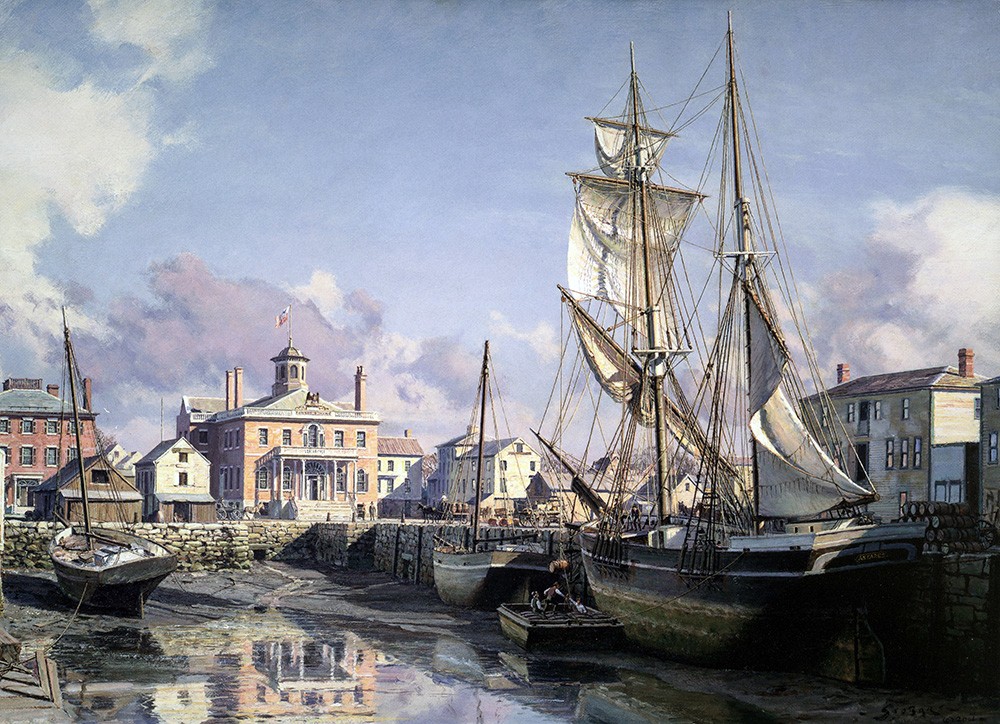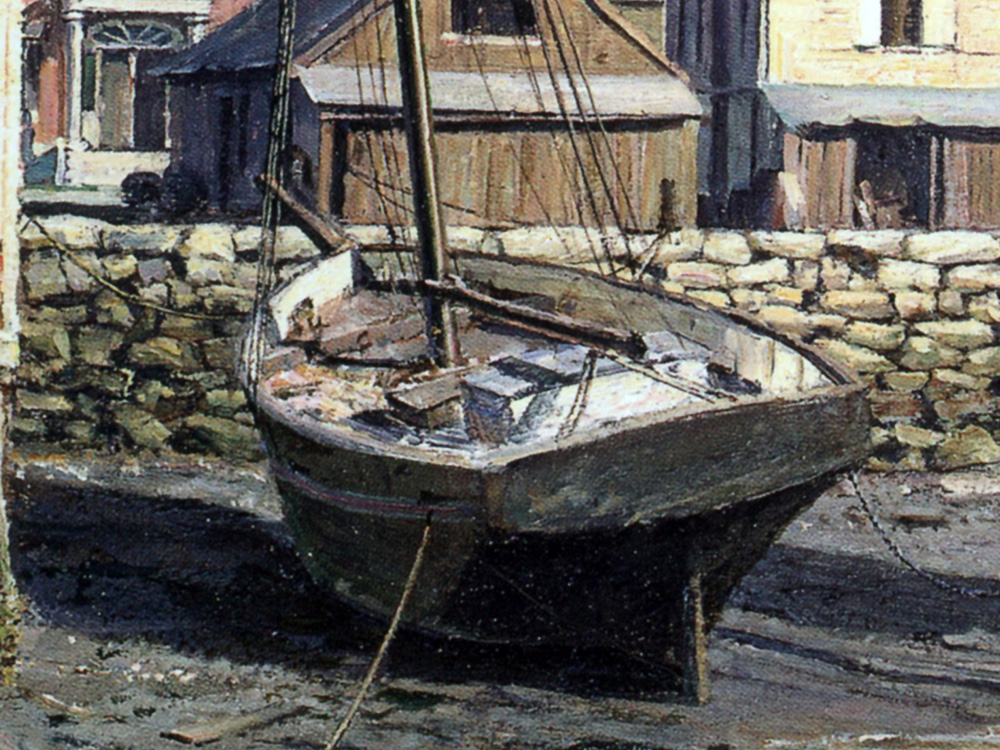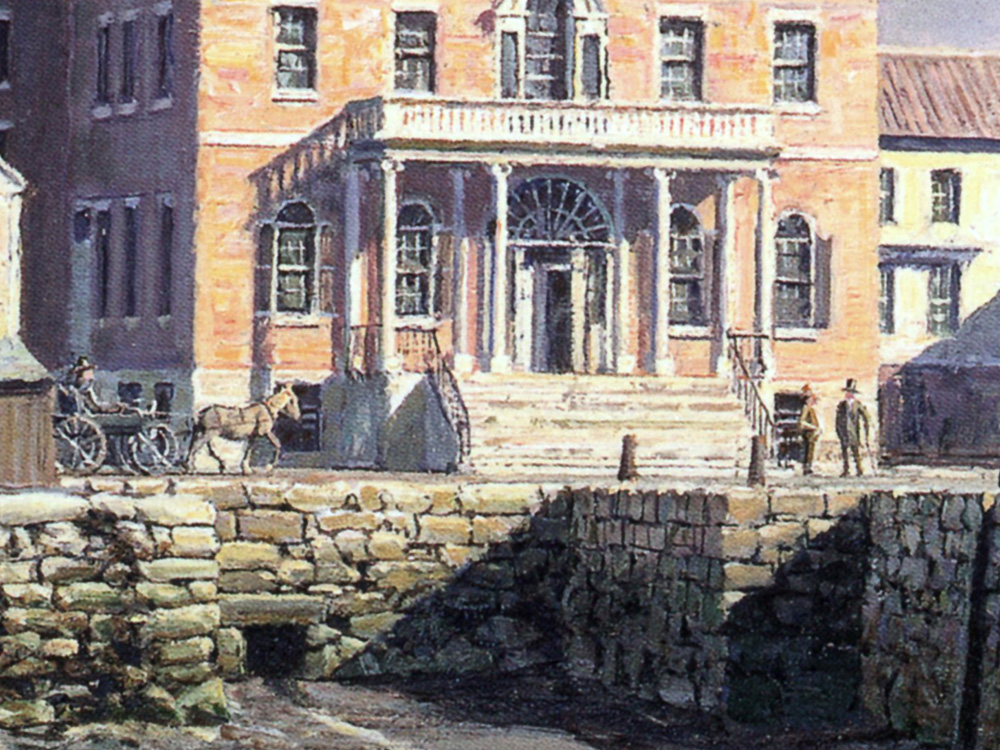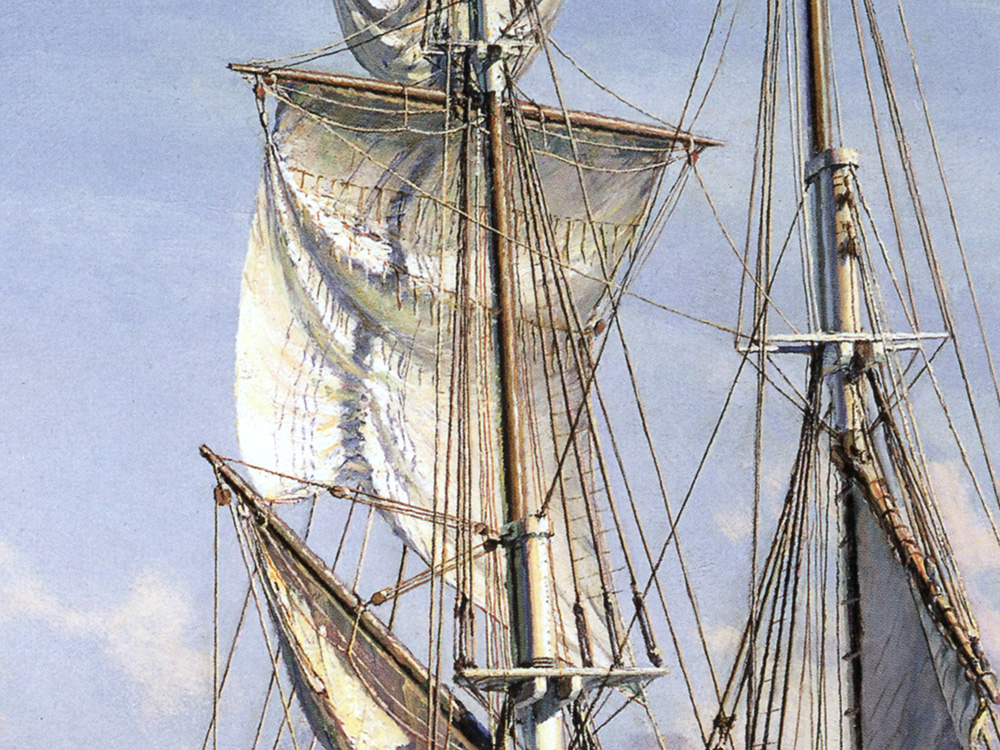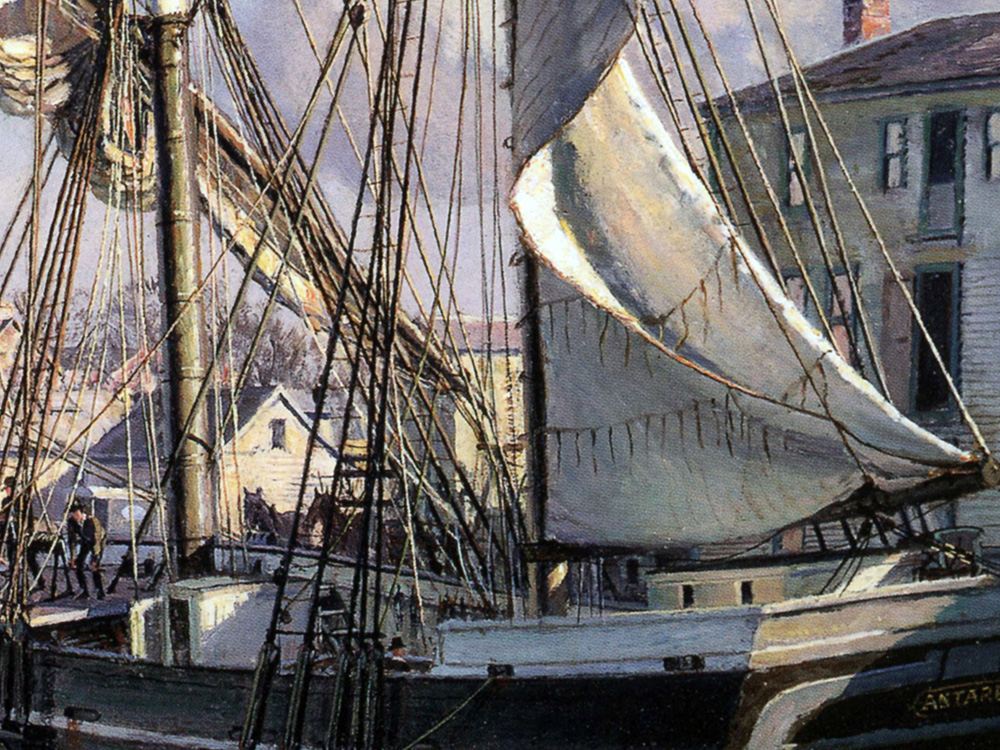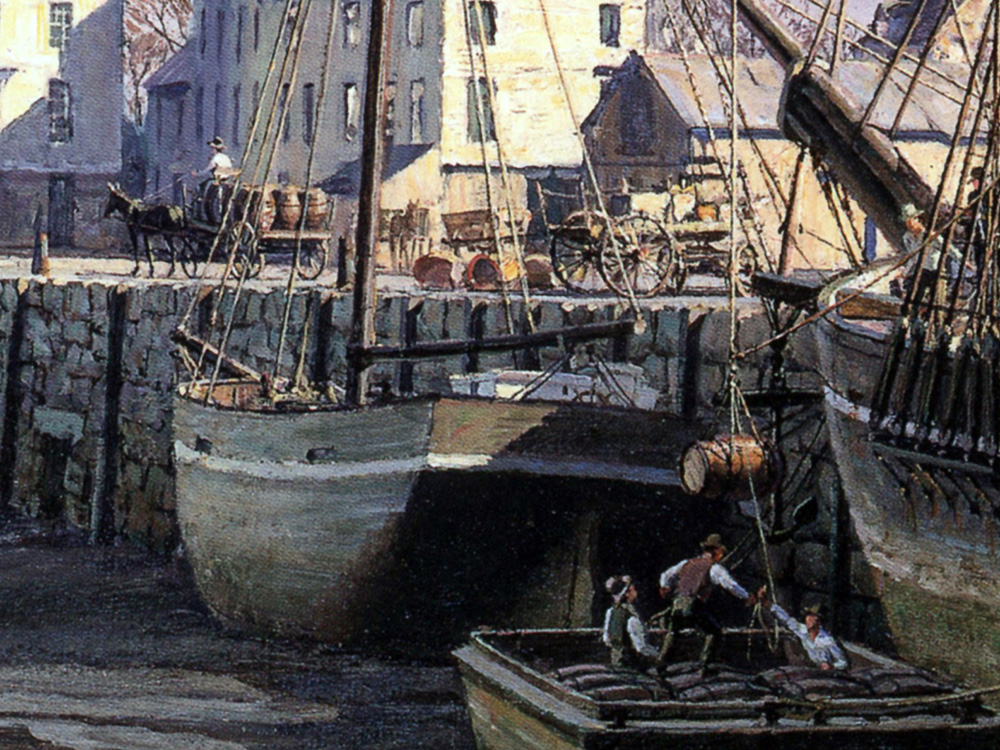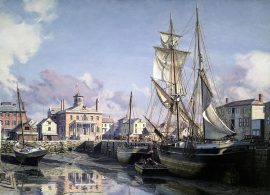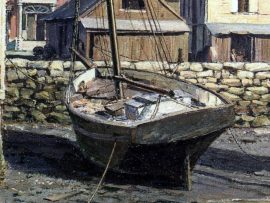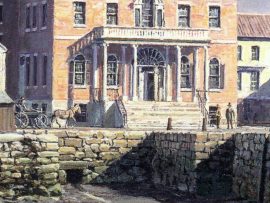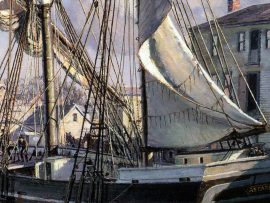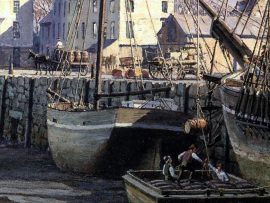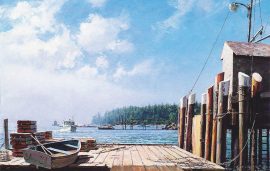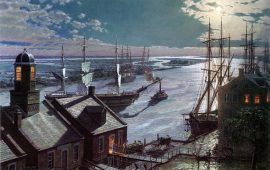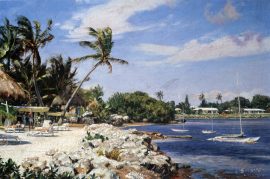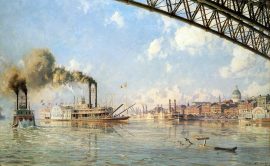Salem: Derby Wharf and the Custom House c. 1825
$500.00
At the beginning of the nineteenth century the small seafaring town of Salem, Massachusetts, had grown to become a very substantial port with the highest per capita income in the United States. Its worldwide trading had opened up commerce with the East Indies and prominent merchant and ship owner Elias Hasket Derby had led the way to the opening of trade with China. The key to all this untold prosperity was the lowly sailing ship.
The global reach of its small ships had, by the early 1800’s, made Salem one of the eight largest ports in the young country. Major industries participating in this expansion were distilling, and the shoe and textile manufacture developing from the burgeoning mill towns of Lawrence and Lowell.
But as commerce grew, so would the need for larger ships, and after the mid 1800’s the advent of the “Down Easters,” five or six times the size of the earlier vessels, would herald the decline of Salem as a major port, with its shallow waters and tidal limitations.
Despite the fading of Salem’s glory, its merchants prevailed, keeping the town prosperous by changing their trading patterns, and by opening up markets in South America, the Maritime Provinces and the South Sea Islands, the length of their ships’ voyages was lessened. Salem’s final great commerce was with the east coast of Africa. The gum copal procured from Zanzibar in 1827 being the port’s final trade monopoly. The merchants also encouraged the expanding Essex County industries by utilizing their East Indiamen to bring in raw cotton, hides, gum copat, jute and wool, then distributing the manufactured products of textiles, shoes, varnish, burlap and woolens. Until early railroads began to connect the major population centers and open up the interior, inland transportation at this time remained in the grip of the horse drawn era’s severe limitations, with almost all significant commerce and cargo carrying being entirely dependent on waterborne vessels under sail.
Although there came the inevitable exodus of merchants to Boston and New York, the making of a fortune was still possible in Salem. One such was by the popular Joseph Peabody, who, like Derby, Gray and Crowninshield before him, was a dominant factor in commerce after 1815. During his lifetime he owned 63 vessels, sailed by 7000 seamen, virtually alone carrying on the coveted China, India and East Indies trades which were to more or less cease when he died in 1844.
This scene shows the port in its heyday, at the center of Salem’s harbor. The 199 ton “Antares” has arrived at Derby Wharf following a storm and dries her sails while unloading cargo as the tide recedes. At the head of the wharf is the famous Custom House, built in 1819 as the port’s commercial center and today preserved, under the custody of the National Parks Service, as standing evidence of Salem’s proud and colorful past.
| Weight | 6.00 lbs |
|---|---|
| Catalog: | Stobart-137 |
| Artist: | John Stobart |
| Dimensions: | 18" x 27" |
| Edition: | 500 |

